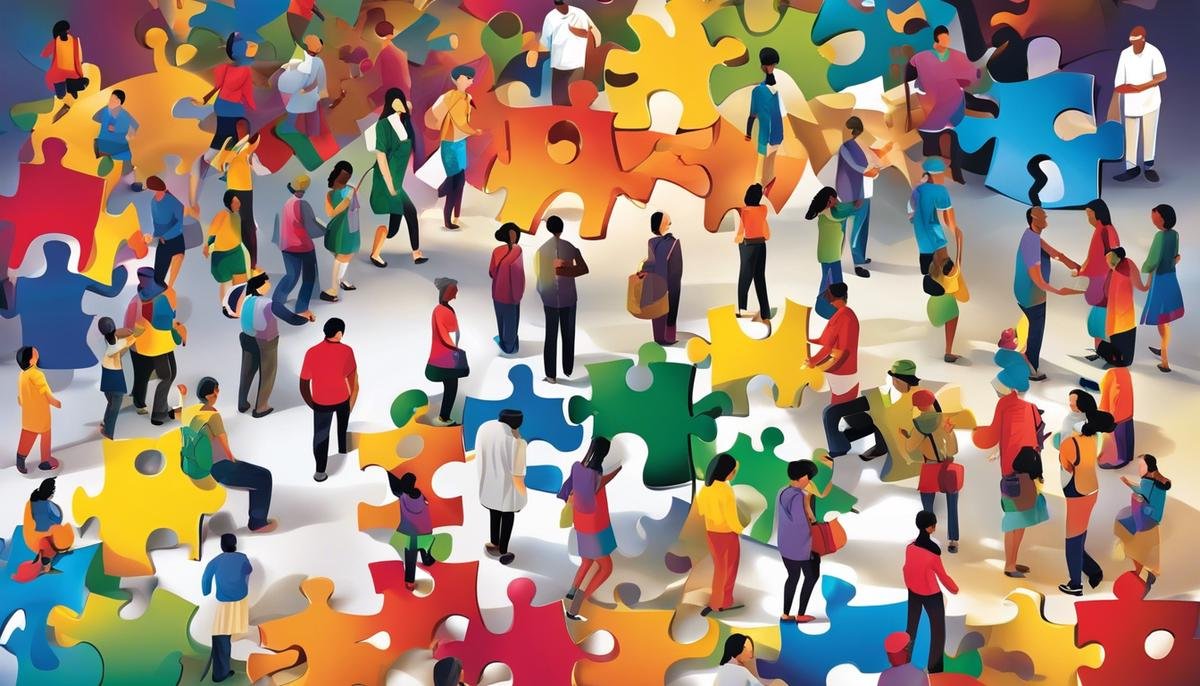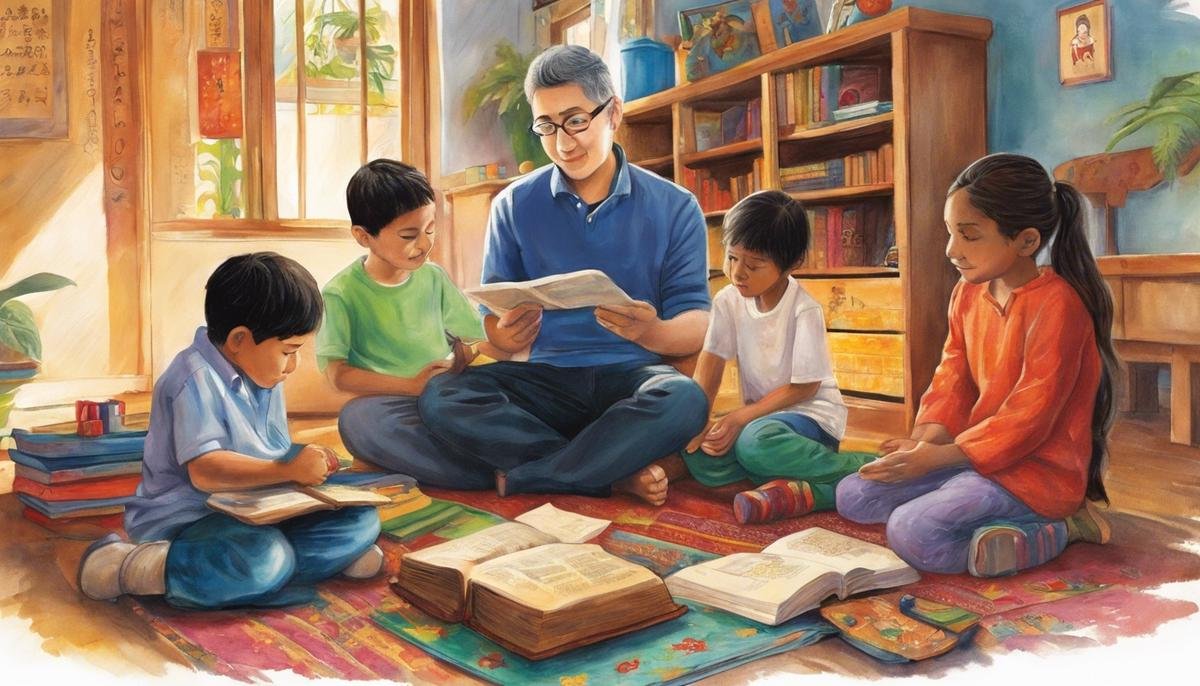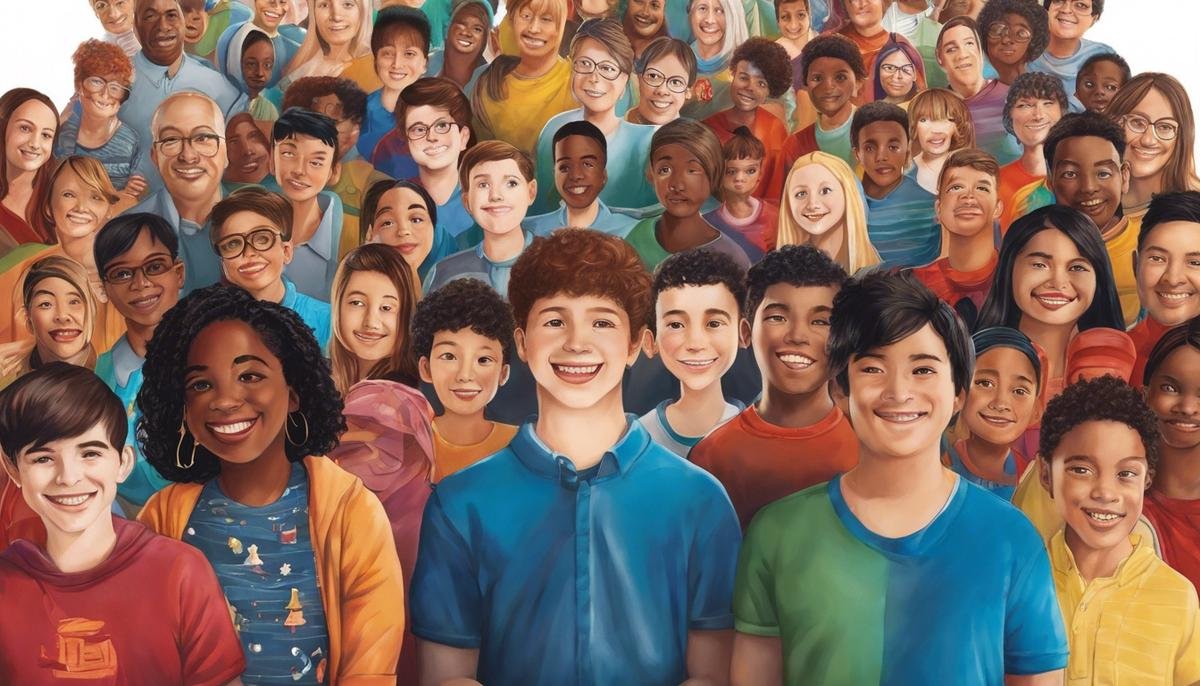
Autism, a neurodevelopmental condition that impacts millions worldwide, is often misunderstood, which can lead to a wide range of societal attitudes and prejudices. Culture plays a defining role in shaping these attitudes, perceptions, and treatments, drastically affecting the lives of those diagnosed with this condition. From societal norms and beliefs to diagnostic biases and treatment approaches, every facet of autism understanding is influenced by the cultural context in which it exists. By deep-diving into various cultures and their perceptions of autism, this discussion will attempt to illuminate the myriad ways in which cultural context shapes our understanding of autism, emphasizing the need for a more inclusive and accepting perspective.
Cultural Perceptions of Autism
Culture’s Influence on Our Understanding of Autism: An Exploration
Understanding autism can often be a complex issue, not just due to its inherent nature but because of the many cultural norms and perspectives that exist around the world. It’s essential to realize that our culture deeply impacts the lens through which we view and understand autism, making it a multidimensional topic indeed.
Diving right into it, culture defines what is considered ‘normal’ or ‘acceptable’ behavior within a community. Thus, it inadvertently lays the groundwork for societal perceptions of autism. For instance, in some cultures, the traits associated with Autism Spectrum Disorder (ASD), such as limited eye contact or awkward social interactions, might be perceived as violating social norms. Consequently, children or individuals with ASD might be misunderstood or stigmatized.
On the flip side, there are other cultures where the norms might be more accommodating to the traits of autism, thereby fostering an environment of acceptance and understanding. For instance, communities that value quiet introspection might view a person with autism as simply having a quiet or introspective nature rather than seeing them as ‘abnormal.’
Moving on, let’s not overlook the crucial role of cultural beliefs and traditions in impacting our views on autism. Some cultures might interpret autism as a supernatural occurrence, be it a blessing or a curse, instead of recognizing it as a neurological variation. Such cultural beliefs can significantly influence how individuals with autism are treated within their communities and whether they receive needed support or medical treatment.
Additionally, culture affects the diagnosis and treatment of autism. For instance, in a culture where verbal communication is highly valued, children who face difficulty communicating might be diagnosed with autism earlier. But in communities where non-verbal communication is common, signs of autism might not be recognized as readily. As for treatment and interventions, cultural beliefs can also play a significant role in what is considered appropriate and effective.
Recognizing the influence culture exerts on perceptions of autism is crucial to promoting a more holistic understanding of ASD globally. This appreciation of cultural diversity and its impact can guide policymakers, advocates, and educators in designing more culturally responsive programs and interventions.
In the end, wouldn’t we all want to live in a world where every individual, including those with autism, is understood, accepted, and appreciated for the unique qualities they bring to the table? Acknowledging the influence of culture on our perception of autism is undoubtedly a step towards that goal. Let’s remember: Embracing cultural diversity isn’t merely about acknowledging our differences but also about respecting and celebrating them!

Cultural Influence on Autism Diagnosis
The Interplay of Cultural Factors in Autism Diagnosis: Unveiling the Layers
Envisioning the world through the lens of cultural diversity and inclusivity, we cannot ignore the ripple effect it has on healthcare practices and diagnosis processes. This significance of cultural context is particularly vivid when we navigate the terrain of diagnosing Autism Spectrum Disorder (ASD) or autism.
Differences in perception, understanding, and attitudes towards autism across cultures can craft unique sets of challenges. These challenges deserve thoughtful consideration because they can significantly shape the path towards recognizing and diagnosing autism.
Research studies and stories from parents suggest that cultural factors can sometimes erect barriers to early autism diagnosis. For instance, language barriers or variations in communication styles across cultures may make it challenging to identify or communicate potential signs of autism. Clinicians need to discern the fine line between what could be a cultural norm versus a potential sign of autism.
Additionally, parenting practices and child development norms that vary from culture to culture could cause misunderstanding or misdiagnosis. A behavior seen as ‘unusual’ in one culture might be quite ‘normal’ and acceptable in another. These discrepancies can influence whether parents, teachers, or even pediatricians recognize the signs of autism in a child.
The thought of autism may also be met with stigma or misconceptions in some cultures, causing a reluctance in accepting the diagnosis. In other cases, the belief in natural or spiritual healing may overrule the tendency to seek medical intervention. Being aware of these inhibitions may provide vital clues to how early diagnosis can be facilitated or hindered in different cultural backgrounds.
The diagnostic criteria we currently use for autism are primarily based on studies done in Western countries, which inevitably brings cultural bias into the equation. This bias can lead to inaccuracies and disparities in autism diagnosis, underlining the importance of developing and using culturally sensitive assessment tools.
Considering cultural factors and expanding autism awareness can significantly influence the accuracy and timeliness of diagnosis. This widens the window for early intervention, which, research unanimously agrees, plays a key role in helping individuals with autism reach their maximum potential.
While it’s vital for professionals like doctors and therapists to undergo cultural competency training, it is equally necessary for us, as a society, to strive towards a more understanding and inclusive viewpoint. The responsibility falls on all of us to recognize and respect the differences among us, weaving them into our social fabric instead of allowing them to cause division or hindrance.
An essential piece of this puzzle is sharing and spreading knowledge about how culture can influence our observations, judgments, and understanding of autism. Encouraging respectful discussion, developing ethnically diverse research, and using unbiased, culturally sensitive screening tools can help ensure no one is left behind in the diagnostic process due to cultural barriers.
In the vast mosaic of cultural diversity, let’s remember that every individual with autism is unique and valuable. By refining our understanding of the culturally mediated dimensions of autism diagnosis, we can help to empower families with the knowledge, services, and support they need, wherever they belong, whatever be their cultural context.

Influence on Autism Treatment and Support
Building bridges towards holistic support for autism: The significance of cultural understanding
In the ever-evolving landscape of autism understanding and support, no one-size-fits-all approach exists – and for good reason. An oft-overlooked aspect in many discussions about autism is the significant role cultural understanding plays in shaping diagnosis and support mechanisms.
Children with autism grow up in a mosaic of cultural contexts, each with its unique set of deep-rooted beliefs, traditions, communication styles, parenting practices, and child development norms. Understanding these cultural nuances can go a long way towards providing a more holistic and effective support system for them.
Despite the global nature of autism, research has indicated a clear presence of cultural bias in current diagnostic criteria. Many assessment tools have been developed within a specific cultural context, often Western, which may not resonate with diverse cultural practices or idioms of distress. This may cause an inadequate or even incorrect interpretation of behaviors which, in other settings, may be perfectly normal. Hence, there’s a dire need to develop culturally sensitive assessment tools.
Misconceptions about autism and associated stigmas are often deep-seated in many cultures, further contributing to the challenges in early diagnosis. A reluctance to seek professional help, along with misattributions of autistic signs to supernatural causes, can lead to late diagnoses or underdiagnoses. Some cultures might view certain behaviors as merely variations of normal child behavior, leading to delayed intervention, while others may see it as a curse or bad parenting, leading to isolation of the affected families.
Language variations and communication styles in different cultures also need careful handling. Those involved in the diagnosis and support for autism must be aware of these differences, as they play a considerable role in understanding an individual’s behavior. Word usage, gestures, eye contact, turn-taking in conversation – these norms vary greatly between cultures. What might be seen as ‘disordered’ in one culture could be perfectly ‘ordered’ in another.
Bridging these cultural divides calls for cultural competency training for professionals. Using a cookie-cutter approach based on standardized Western procedures fails to recognize and respect the cultural backgrounds of individuals with autism. Professionals in the field of autism should, therefore, strive to familiarize themselves with various cultural norms and practices. This cultural flexibility will result in more accurate diagnoses and culturally relevant interventions.
Society also benefits from being educated to accept the neurodiversity inherent in our world. After all, it isn’t just about understanding autism, it’s about acceptance, appreciation and creating an environment in which every individual, regardless of their neurological make-up, can thrive. This delicate balance involves spreading knowledge and awareness, along with initiating respectful discussions to shatter stereotypes.
On a concluding note, the journey towards empowering families dealing with autism, within their cultural context, is an ongoing one. And although challenges are plenty, by fostering an environment of cultural understanding, we’re paving the way for a better future. Remember, at the heart of every strategy, there is an individual living with autism, uniquely themselves, with their own story to tell. Let’s honor their narrative by stepping into their shoes, embracing their culture, and seeing the world through their eyes.

Impact of Societal Attitudes and Awareness
Adapting an Appropriate Mindset: The Meaningful Role of Society in Autistic Journey
Acceptance and understanding of autism may vary greatly across diverse cultural backgrounds. One’s worldview, shaped by cultural norms, traditions, and beliefs, can significantly influence how one perceives this complexity. Since it’s previously established that autism’s perception and recognition can vary widely depending upon cultural context, it’s important to navigate through the impact of societal attitudes towards autism in different cultures.
A society’s level of awareness and sensitivity towards autism plays a key role in the acceptance of individuals with autism. In societies that nurture a deep-seated sense of community and empathy, the journey of families dealing with autism can be substantially different compared to a society where such support is lacking. Ignorance and lack of knowledge about autism may foster harmful stereotypes, misconceptions, and stigmatization which can lead to speculated social perceptions towards autism.
Unfortunately, these misconstrued perceptions may act as unspoken barriers, hindering early recognition and diagnosis of autism. Certain societies may view autism as taboo or associate it with dark spiritual beliefs, hence the child ends up receiving fewer opportunities for early intervention and support. These stereotypes result from societal misunderstanding and have grave consequences, underscoring the dire need for widespread awareness and education.
Language, a critical component of culture, is another area that presents a unique challenge. The nuances in communication styles, degrees of expression, and understanding vary vastly across cultures. These variations can add layers of complexity to the understanding of autism. It becomes all the more significant when we realize that communication difficulties are a common feature of autism.
Parenting styles and norms also play a vital role in early diagnosis and intervention. Cultural norms and traditions greatly influence how a parent perceives their child’s behaviors. In certain cultures, they could be misinterpreted as disobedience or spoiled attitudes rather than early signs of autism. Thus, an understanding of diverse parenting norms and practices, especially related to child development, is crucial for professionals dealing in autism.
Now, the question is: how can societies adapt and become cognizant of these cultural differences? Just as diversification is essential in financial portfolios, it’s also key in the world of autism care. By immersing ourselves in different cultural perspectives, we can better understand and appreciate the diversity of individuals with autism.
Professionals dealing with autism should aspire to achieve cultural competency. This implies understanding, respecting, and responding to the unique needs of different cultural contexts. Secondly, the focus should be to debunk myths regarding autism by sharing knowledge, enhancing societal awareness, thereby raising a diverse but united front against stereotypes.
It is also crucial to further refine autism diagnostic criteria by removing inherent cultural biases, and developing assessment tools that are culturally sensitive. Additionally, creating an environment that encourages culturally diverse research and respectful discussions can lead to more comprehensive understanding and support. Remember, our goal is not about finding a cure for autism—it’s about creating a world that celebrates neurodiversity, accepts, and appreciates it.
In this journey, empowerment is key. It is not enough to just support families navigating autism, we must empower them with applicable knowledge, services, and tools that are culturally appropriate. Society plays an instrumental role in fostering such an environment of support that nurtures their resilience and strength.
On a closing note, understanding and respect are two sides of the same coin. By enhancing societal attitudes and awareness about autism across various cultures, we are not only building a more inclusive society, but we are also ensuring that the journey of every family dealing with autism, irrespective of their cultural background, is marked with dignity, respect, and understanding.

When it comes to autism, understanding isn’t unilateral – it’s a vast mosaic that encompasses multiple perspectives, all shaped by the spectral hues of cultural context. Furthermore, this cultural lens not only influences autism diagnosis and treatment methods but also molds societal attitudes towards autism. By carefully examining these cultural perspectives, a path can be carved towards informed, inclusive, and culturally sensitive policies and practices that ensure people with autism are not marginalized but well-understood and respectfully accommodated within their cultural milieu. Through unfettered understanding and acceptance, society can truly become a nurturing environment for those within the autism spectrum.




